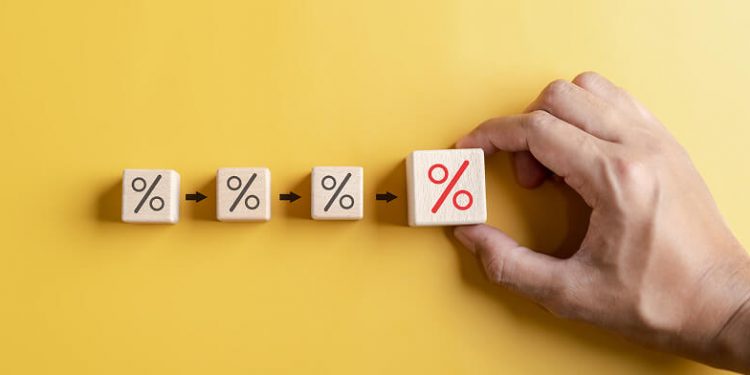Mutual funds and fixed deposits are two of the most popular investment options you can choose to get good returns. Though the rate of return in the former one is directly related to stock market performance, while the latter one will give you a fixed or assured rate of return within the stipulated time.
Mutual funds and fixed deposits both have their own pros and cons, investors choose them as per their investment goals, funds availability and risk tolerance capability. To take the right decision, which one is suitable or best, you need to understand the key differences between two of them.
What is a Fixed Deposit?
Fixed deposits are a type of investment scheme, or you can say a bank account, in which you can invest a lump sum amount for a specific time. Here you will get a fixed amount of return as per the rate of interest offered by the bank and predefined at the time of the investments.
Though the rate of interest is low compared to other investment schemes, but considered one of the safest investment options in the financial sector. Fixed deposit schemes are usually offered by scheduled commercial banks or NBFCs and other RBI designated financial institutions.
Start Your Mutual Fund Journey – Open an Account Now!
What are Mutual Funds?
The mutual schemes consist of a portfolio of stocks or bonds and market-linked underlying securities. The rate of return in this scheme is not predefined, it’s completely based on the performance of the market or underlying securities included in the mutual fund scheme.
The rate of return in mutual funds can be high but also risky, if market conditions are not running well or unexpected crises arise. The mutual fund companies, stock broking houses and financial companies involved in stock market-related investment plans, offer mutual fund schemes.
Recommended Read: How to Calculate Mutual Fund Returns?
Difference Between Mutual Funds and Fixed Deposits:
| Aspects | Mutual Funds | Fixed Deposits |
| Definition
|
Mutual funds are investment schemes that consist of assets like equities, bonds and other investable securities offered through a portfolio. Mutual fund companies and broking houses dealing in the stock market trading and investing related services offer various types of mutual fund schemes. | FDs are fixed-income investment schemes in which you get a fixed rate of return for a specific period. You can open a fixed deposit account with scheduled commercial banks or NBFCs in which you can invest a fixed amount of money with a predefined rate of return as per the scheme. |
| Time Horizon
|
The time horizon of mutual fund schemes may vary from schemes to schemes, it can be from three years to five, seven or ten years or for an unlimited period with the facility to withdraw your funds anytime. | The time horizon of fixed deposits is from one year to three, five, seven or up to ten years as per the scheme offered by the banks. In FDs, you are usually not allowed to withdraw funds before maturity. |
| Rate of Returns
|
In Mutual funds, the rate of return is not fixed; it completely depends on the performance of the underlying securities in the portfolio. | In FDs, the rate of return is fixed with predefined interest rates as per the time period of maturity of the scheme offered by the banks or NBFCs. |
| Investment Options | Here you will get various investment options to invest in equity funds, debt funds or hybrid funds through SIPs for monthly investments or one-time lump sum investment plans. | Here also you will also get various options to invest like Regular FDs, Standard FDs, Corporate FDs, Tax Saving Schemes, Fixed Income FDs or FDs for Senior Citizens. |
| Benefits of Tax | The profit earned from mutual fund investments attracts capital gains tax, but ELSS funds are also eligible to get the tax benefits under Section 80C. | The incomes earned from FDs are also taxable but gets tax benefits under Section 80C, with tax exemptions under Section 80TTB for senior citizens. |
| Withdrawal Facility | In these schemes, investors can withdraw funds any time after the lock-in period, which can differ from scheme to scheme and as per the mutual fund company’s rules. | In FDs, you can withdraw the funds only after the maturity period, which is predefined as per the scheme; if you withdraw before maturity, you will get low interest. |
| Liquidity Aspects | It is a highly liquid investing option with flexibility to redeem funds like SIP, STP, and SWP, with the option to liquidate the funds at any time after the lock-in period. | The liquidity is moderate as the tenure of funds is up to five to ten years. If you liquidate funds before maturity, you will not get the specified interest on your FDs. |
| Risk Levels | The risk level is high, as the returns under this scheme are directly associated with market performance that can be affected by the various risk factors. | The risk level is very low, as there are guaranteed returns on such investments with no major risk to the investment, as the principal amount is safe. |
| Regulatory Bodies | The Securities Exchange Board of India (SEBI) regulates the mutual fund schemes and stock market-related all types of investment schemes.
|
FDs or banks related to all types of investment schemes are regulated by the Reserve Bank of India, which is acting as the central bank of India. |
Conclusion: Mutual Funds or Fixed Deposit, which is better for you?
Mutual funds are suitable for high-risk profile investors who can tolerate the unexpected fluctuations in the market movement, with the corpus of funds to keep investing or reshuffling their investment portfolio. While on the other hand, FDs are suitable for low-risk investors who want to get a fixed amount of return within a specified period with the security of their principal amount.
In mutual funds, you can withdraw funds after lock-in periods that are usually after a few months or years, while in FDs, the maturity period is very long. Investing in mutual fund schemes can be risky compared to FDs, as returns on mutual funds are associated with market performance but later one offer the stability and guarantee of returns. You can choose the right one as per your risk profile and investment goals. And the best way is to diversify your investment in both schemes to get a balanced return.







